
Terpenes give your favorite cannabis strains their unique aromas and flavors—but that’s not all they do. In cannabis, terpenes contribute to the overall therapeutic properties by joining forces with cannabinoids and other compounds.
A 2020 study posits that “some terpenes can enhance the effect of cannabinoids and synergize the feeling of relaxation, stress relief, energy boost, and maintaining focus along with their underlying pharmaceutical functions.”
If you want to experience the unique benefits of microdosing cannabis, our low-dose THC gummies are the most convenient and precise way. They combine balanced ratios of THC and CBD to achieve gentle mood-elevating and relaxing effects.
What are terpenes?
Terpenes are a diverse class of organic compounds that many plants, including cannabis, produce. They give distinctive aromas and flavors associated with different cannabis strains. Chemically, terpenes are hydrocarbon molecules composed of isoprene units (C5H8). They can be classified based on the number of isoprene units they contain, with monoterpenes (C10H16) and sesquiterpenes (C15H24) being the most common in cannabis.
Terpenes are volatile compounds: they have small molecular weight and low boiling point, so they easily evaporate at room temperature. This volatility allows them to be readily released into the air, so our olfactory system can detect them as distinctive aromas.
In plants, terpenes play several ecological roles, such as attracting pollinators, repelling herbivores, and protecting against environmental stresses. In cannabis, they are synthesized and stored in the trichomes, the resinous glands that cover the surface of the flowers and leaves.
They don’t just contribute to cannabis with their aromatic properties. Terpenes have their own effects and exert therapeutic benefits. They also contribute to the entourage effects of cannabis. This synergistic interaction between terpenes, cannabinoids, and other compounds in the cannabis plant enhances or modulates the overall therapeutic effects of cannabis on the body and mind.
Our low-dose gummies and cannabis-infused beverages combine THC and CBD in balanced ratios to trigger the entourage effect. Order our Buzz Drops™, add a few drops to your favorite mocktails, and enjoy mild euphoria paired with gentle relaxation.
What are the benefits of terpenes?
Beyond just aroma and flavor, terpenes contribute to cannabis in the following ways:
- Terpenes work synergistically with Delta 9 THC and cannabidiol (CBD), enhancing or modulating their recreational and medicinal properties. This synergy, known as the entourage effect, can increase the efficacy and potency of the cannabinoids. For example, myrcene enhances the permeability of the blood-brain barrier, allowing more THC and CBD to reach target sites in the brain.
- Some terpenes, such as caryophyllene and myrcene, have anti-inflammatory properties. They inhibit the production of pro-inflammatory cytokines such as TNF-α, IL-1β, and IL-6. Together with the potent anti-inflammatory effects of THC and CBD, they could manage conditions such as arthritis or chronic pain.
- Certain terpenes have anxiolytic effects, alleviating the symptoms of anxiety and stress. They interact with GABA receptors, which are responsible for regulating anxiety and stress. They can increase GABA neurotransmission, producing a calming effect.
- Terpenes may offer neuroprotective properties to potentially aid neurological disorders such as epilepsy or Alzheimer's disease.
- Many terpenes have antioxidant properties. They scavenge reactive oxygen species (ROS) and prevent lipid peroxidation, protecting cells from oxidative damage. They also regulate the expression of antioxidant enzymes such as glutathione peroxidase and superoxide dismutase.
- Some terpenes have antibacterial and antifungal properties, which could be useful in managing infections such as Staphylococcus aureus and Escherichia coli. They also have antifungal properties, inhibiting the growth of Candida albicans and other fungal species. THC and CBD also have antimicrobial effects, enhancing the overall therapeutic potential of cannabis for managing infections.
- Terpenes have analgesic effects, alleviating pain associated with many chronic conditions. For example, myrcene and caryophyllene interact with TRP channels, which are involved in pain perception. By desensitizing these channels, they reduce pain signaling.
- Certain terpenes can enhance the absorption and bioavailability of THC and CBD, allowing for better uptake by the body. They increase the permeability of cell membranes and inhibit the activity of cytochrome P450 enzymes, which are responsible for metabolizing THC and CBD.
Research points to certain terpenes mimicking the effects of cannabinoids and amplifying their activity. This offers clear evidence for the entourage effect and that terpenes can increase the therapeutic benefits of cannabinoids.
To experience this cannabis synergy, try our low-dose entourage effect gummies with precise amounts of THC and CBD. Our Bliss Delta 9 gummies contain 5 mg of THC and 5 mg of CBD for a balanced experience and ratios that bring out the advantages while turning down the potential side effects.
“These gummies are the best. They are an absolute staple. They’ve replaced my happy hour glasses of wine. I’ve shared my love for these gummies with friends and they’ve all purchased them, too!”
List of cannabis terpenes and their effects
Terpene profiles of cannabis vary between sativas, indicas, and hybrid strains. Sativas often contain terpenes associated with alertness and creativity, while indicas typically feature more relaxing compounds. Hybrid cannabis strains offer a complex blend, inheriting terpenes from both indica and sativa parents. This results in a wide spectrum of effects and potential therapeutic benefits.
A comprehensive study using advanced analytical techniques identified a total of 146 terpenes and terpenoids across different cannabis strains. Most strains typically express only 10–30 dominant terpenes in significant quantities. The exact terpene profile depends on the strain's genetics, growing conditions, and cultivation methods. These dominant terpenes contribute most significantly to a strain's aroma, flavor, and potential effects.
Here are the 16 most commonly found terpenes in cannabis:
- Myrcene
- Limonene
- Linalool
- Caryophyllene
- Pinene
- Humulene
- Terpinolene
- Ocimene
- Eucalyptol
- Geraniol
- Bisabolol
- Valencene
- Nerolidol
- Camphene
- Borneol
- Phytol
Myrcene
The most abundant terpene in cannabis, myrcene is known for its earthy, musky aroma. It's found in high concentrations in indica-dominant strains, contributing to their sedative effects. Myrcene enhances the permeability of cell membranes, increasing the absorption of cannabinoids and intensifying their effects. It may also offer pain-relieving and anti-inflammatory benefits.
Limonene
With its citrusy aroma, limonene is common in sativa-dominant strains. It's associated with uplifting and mood-enhancing effects and can alleviate the symptoms of anxiety and depression. Limonene may also have antibacterial and antifungal properties, and it could enhance the absorption of other terpenes and cannabinoids.
Linalool
With its floral, lavender-like scent, linalool is prevalent in many hybrid strains. It's known for its calming and anxiolytic effects, relieving stress, anxiety, and insomnia. Linalool may also possess anti-inflammatory, analgesic, and anticonvulsant properties.
Caryophyllene
This terpene has a unique spicy, peppery aroma and is the only terpene known to interact directly with the endocannabinoid system's CB2 receptors. The endocannabinoid system is a complex cell-signaling network in the human body that plays a crucial role in maintaining homeostasis. It consists of endocannabinoids, receptors (primarily CB1 and CB2), and enzymes, which interact with cannabinoids and some terpenes from cannabis to produce physiological effects.
This interaction may contribute to its potent anti-inflammatory and pain-relieving effects. Caryophyllene is common in many hybrid strains and may also offer neuroprotective benefits.
Pinene
Recognizable by its pine-like aroma, pinene is often found in sativa strains. It's known for potentially enhancing memory and promoting alertness, possibly counteracting some of THC's short-term memory impairment effects. Pinene acts as a bronchodilator—it helps open and widen the airways in the lungs, improving airflow and making breathing easier. It also has anti-inflammatory properties.
Product QUIZ
Need help deciding what product is best for you? Take our quiz, just three questions until your perfect match!
Humulene
With a hoppy, earthy aroma, humulene is found in many hybrid strains. It's unique for its potential appetite-suppressing effects, setting it apart from the appetite-stimulating effects often associated with cannabis use. Humulene also possesses anti-inflammatory and antibacterial properties.
Terpinolene
This terpene has a complex aroma with floral and herbal notes. It's often found in sativa-dominant strains and is known for its uplifting and energizing effects at lower doses, while higher concentrations may be more sedating. Terpinolene may also have antioxidant and antifungal properties.
Ocimene
With a sweet, woody, and citrusy aroma, ocimene is often found in sativa strains. It's known for its potential anti-inflammatory, antiviral, and decongestant properties. Ocimene may contribute to the energizing effects associated with certain cannabis strains.
Eucalyptol
Known for its minty, cool aroma, eucalyptol is found in smaller quantities in some cannabis strains. It has potential respiratory benefits, acting as a decongestant (reduces swelling in nasal passages) and bronchodilator. Eucalyptol may also have cognitive-enhancing effects, improving focus and mental clarity. It may also possess anti-inflammatory and analgesic properties, making it potentially beneficial for pain management.
Geraniol
This terpene has a sweet, floral, rose-like scent and is present in different cannabis strains. Geraniol is known for its potential neuroprotective and antioxidant properties, which may protect brain cells from damage. It also exhibits antimicrobial effects, potentially aiding in fighting bacterial and fungal infections. Geraniol might also have anti-tumor properties, though more studies are needed to confirm this.
Bisabolol
Characterized by its subtle, sweet floral aroma, bisabolol is found in moderate amounts in some cannabis varieties. It's renowned for its potential anti-inflammatory and analgesic effects, making it beneficial for pain relief. Bisabolol also has skin-soothing properties, which is why it's often used in cosmetic products. Its potential anti-microbial and anti-irritant effects are also sought after in cosmetics.
Valencene
Recognizable by its citrusy, sweet orange aroma, valencene is present in smaller quantities in certain cannabis strains. It's known for its potential anti-inflammatory properties. Valencene also acts as a natural insect repellent.
Nerolidol
This terpene has a woody, fresh bark aroma. Nerolidol is known for its potential sedative properties, which may contribute to the relaxing effects of certain strains. It also exhibits antifungal and antiparasitic properties. Nerolidol might enhance skin penetration of other compounds, potentially increasing the efficacy of topical cannabis preparations.
Camphene
With its musky, earthy, fir needle aroma, camphene is present in moderate amounts in some cannabis strains. It's recognized for its potential pain-relieving and anti-inflammatory properties. Interestingly, camphene might also have cholesterol-lowering effects, potentially benefiting cardiovascular health. It may also possess antioxidant properties, protecting cells from oxidative stress.
Borneol
Characterized by its camphor-like, cool, minty aroma, borneol is known for its analgesic properties, potentially aiding in pain relief. Borneol has anti-insomnia effects, promoting better sleep. Borneol may also possess anti-inflammatory and neuroprotective properties, potentially benefiting overall brain health.
Phytol
Phytol is a fascinating terpene that you might recognize from the floral notes in your favorite perfume or the subtle waxy aroma of green tea. This compound has potential antioxidant, anti-inflammatory, and pain-relieving properties. Some people turn to phytol for its calming effects because it can ease anxiety and promote relaxation.
Experience the balanced effects of our Relax Plus gummies. Each gummy contains 5 mg THC and 25 mg CBD for a gentle, soothing experience without overwhelming effects.
“Tried this for the first time last night. 30 minutes later I was feeling much more patient than normal and very calm during the normally hectic dinner & bedtime routines. It made the evening so enjoyable.”
—TONI
How do terpenes affect a cannabis high?
Terpenes can affect the high. They shape your overall cannabis experience because apart from flavors and aromas, they also contribute their own medicinal properties and effects. These aromatic compounds work alongside THC and CBD to create the entourage effect, potentially tempering unwanted ones, and allowing for a more tailored high.
Some terpenes, such as caryophyllene, might boost CBD's relaxing properties, while others could enhance THC absorption. Each terpene brings its own effects to the table: limonene for a mood lift, linalool for calmness, or pinene for mental clarity.
Terpenes might even alter your sensory perceptions during a high, intensifying colors, sounds, or flavors. This complex interplay is why two strains with similar THC levels can produce such different experiences.
Many users report that terpene-rich cannabis provides a more nuanced, well-rounded high than isolated THC. Both can be enjoyable, but the complexity of the latter often creates a richer cannabis experience.
Side effects of terpenes
At higher doses, terpenes can overwhelm your system and cause the following adverse effects:
- Dizziness
- Headaches
- Nausea and vomiting
- Drowsiness and increased sedation
- Respiratory irritation
- Allergic reactions (e.g., rash, itching, asthma)
- Increased sensitivity to sunlight (phytophotodermatitis)
- Digestive discomfort
- Kidney or liver toxicity
- Impaired coordination
- Cognitive impairment
- Anxiety or paranoia
- Excessive dry mouth
- Eye irritation
- Skin irritation or burning sensation
In moderation, these aromatic compounds amplify the therapeutic effects of cannabis while delivering an unparalleled sensory experience. Microdosing cannabis is the way to go if you want to enjoy synergistic benefits to the fullest without psychoactive effects. Our gummies pack carefully measured amounts of THC and CBD.
Try our Relax Plus gummies and savor the pure therapeutic relief and bliss in perfect harmony.
Where to buy the best cannabis edibles
At nama™, we specialize in crafting premium cannabis edibles. Our THC gummies and cannabis-infused beverages are thoughtfully formulated for the entourage effect, with precise amounts of THC and CBD in every serving.
We blend the best qualities of indica and sativa varieties to create a balanced experience that uplifts your mood while promoting relaxation. We use only the highest-quality, hemp-derived extracts, ensuring each product is rigorously tested for purity and potency. Don’t worry, all our edibles are federally legal in the U.S.
With nama™, you're not just consuming cannabis—you're savoring an artfully crafted experience.
Cannabis terpenes FAQ
Why do terpenes matter in cannabis?
Terpenes are crucial in cannabis because they contribute to the plant's aroma profiles and potential medicinal benefits. These secondary metabolites interact with cannabinoids to produce the entourage effect, enhancing or modulating the overall effects of cannabis. Different types of terpenes can influence the therapeutic properties of different cannabis chemotypes, potentially offering benefits for conditions such as neuropathic pain, fibromyalgia, chronic migraines, and more.
What is a good terpene percentage?
A good terpene percentage typically ranges from 2% to 5% in high-quality cannabis. Some premium strains may contain up to 10% terpenes. The ideal percentage depends on the specific terpene profile and desired effects. For medicinal purposes, strains with higher terpene content are preferred for their potential health benefits.
What do terpenes do to the brain?
Terpenes can interact with the brain in different ways, influencing cannabinoid activity and potentially offering neuroprotective effects. Some terpenes, such as linalool, may have anxiolytic properties, while others like limonene might contribute to mood elevation. Terpenes can also affect neurotransmitter levels and interact with receptors in the brain, modulating cognitive function and emotional states.
Which terpenes make you laugh?
While no specific terpene directly causes laughter, some may contribute to an uplifted mood that could lead to laughter. Limonene, found in strains like Lemon OG Kush, is associated with mood enhancement and may promote a sense of well-being. Myrcene, prevalent in strains like White Widow, can have relaxing effects that may lower inhibitions and increase sociability, potentially leading to more laughter.
Which terpene is most euphoric?
Limonene is often considered one of the most euphoric terpenes. Found in citrus fruits and cannabis strains such as Durban Poison, limonene is associated with mood elevation and stress relief. The euphoric effects of cannabis result from the interaction of multiple compounds, including cannabinoids and other terpenes, rather than a single terpene alone.
Is 10% terpenes too much?
While 10% terpenes is higher than average, it's not necessarily too much. Some premium cannabis strains and concentrates may reach this level. Such high terpene content is rare in flower form and more common in extracted products. The effects and potential benefits of high terpene concentrations are influenced by the specific terpene profile and individual response.
What is stronger, sativa or indica?
The strength of cannabis depends more on its cannabinoid and terpene profile than whether it's sativa or indica. Traditionally, sativas were associated with energizing effects and indicas with relaxation, but modern cannabis breeding has blurred these distinctions. Potency is determined by THC content and the entourage effect of cannabinoids and terpenes. Hybrid strains often combine characteristics of both sativa and indica, offering a range of effects.
Resources
Sommano, S. R., Chittasupho, C., Ruksiriwanich, W., & Jantrawut, P. (2020). The Cannabis Terpenes. Molecules, 25(24). https://doi.org/10.3390/molecules25245792
Kaur, J., Sun, N., & Hill, J. E. (2023). Comprehensive Profiling of Terpenes and Terpenoids in Different Cannabis Strains Using GC × GC-TOFMS. Separations, 10(9), 500. https://doi.org/10.3390/separations10090500
nama CBD FDA & Legal Disclaimer
Our products are not intended as medical advice, diagnosis, or treatment of any disease. They are not a replacement for prescription medications and have not been evaluated by the Food and Drug Administration (FDA).
The information provided on this website does not and is not intended to, constitute legal advice or any statements of the status of any laws. Any information, content, and materials available on this site are for general informational purposes only and are not intended to be relied upon for any purpose.
Readers of this website should contact their attorney for advice concerning any particular legal matter including decisions on what products are, or are not, legal to sell, possess, or consume. Each reader, user, or browser of this site should act or refrain from acting based on information on this site after first seeking legal advice from their counsel in the relevant jurisdiction.
Only your attorney can provide assurances that the information contained herein – and your interpretation of it – is applicable or accurate for your particular situation. Use of, and access to, this website or any of the links or resources contained within the site do not create an attorney-client relationship between the reader, user, or browser, and website authors, contributors, contributing law firms, or committee members and their respective employers.
Further reading
What is the terpene profile of hybrid cannabis?
How does hybrid weed make you feel?
Can cannabis drinks get you high?
Are THC drinks legal in the U.S.?
What are the benefits of hybrids?

![Buzz Packs™ [THC and CBD Powder Drink Mix]](http://www.namacbd.com/cdn/shop/files/nama_buzz_packs_thc_drink_pack_white_background.png?v=1741884660&width=480)
![Buzz Packs™ [THC and CBD Powder Drink Mix]](http://www.namacbd.com/cdn/shop/files/Buzz_Packs_Label.png?v=1741884660&width=480)


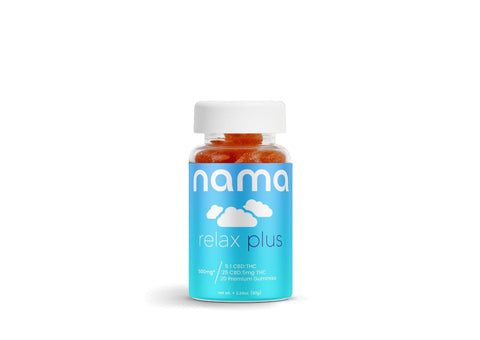

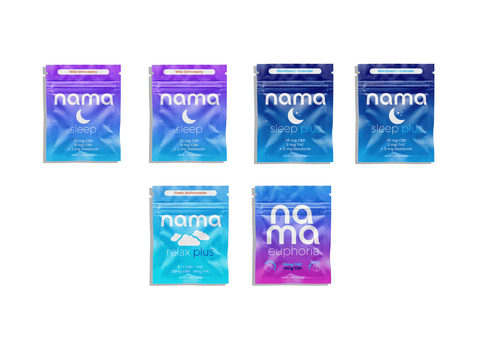

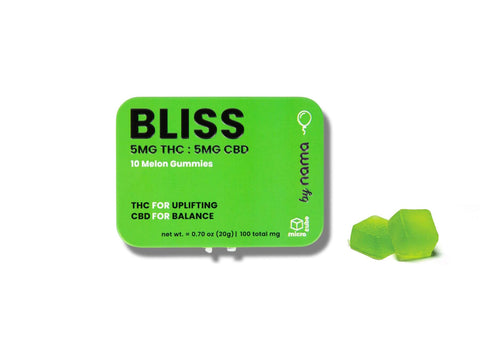
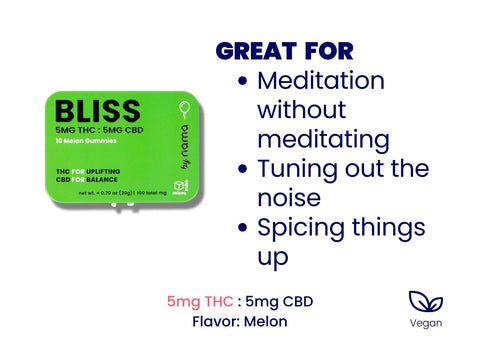


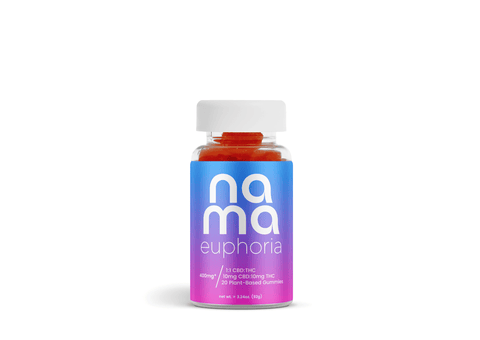
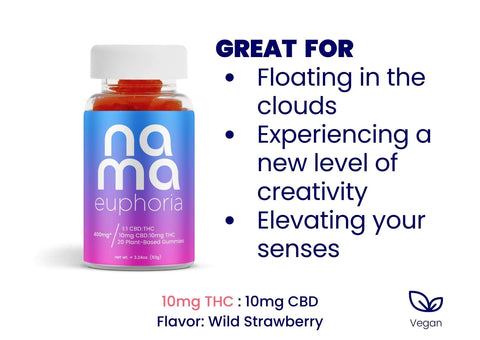
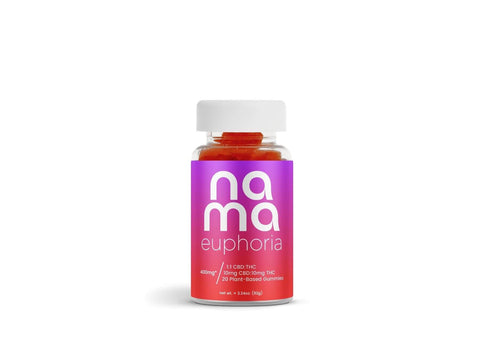
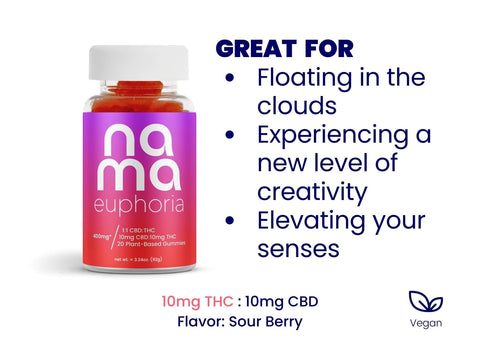
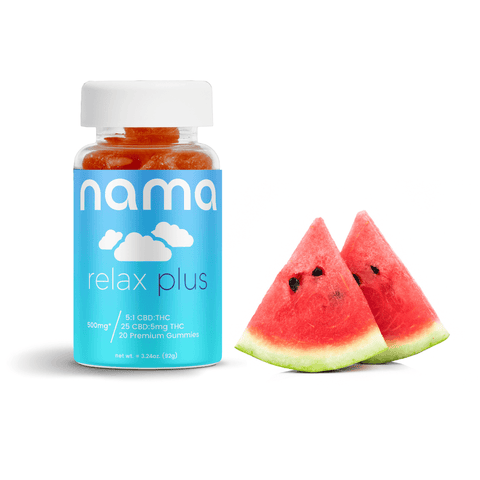

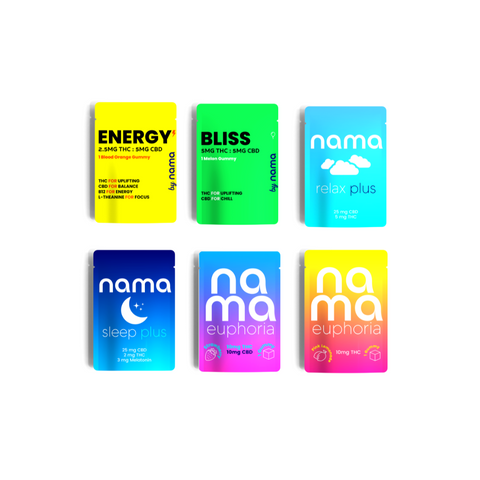
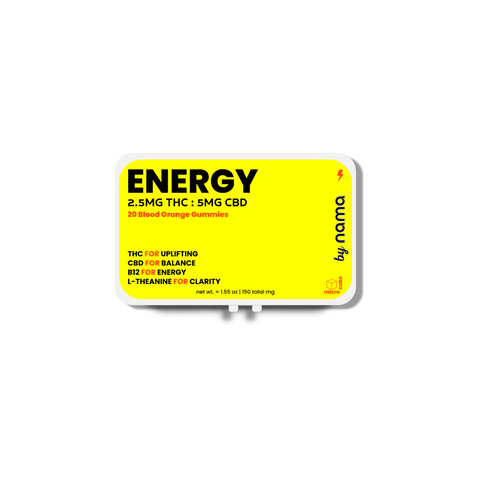

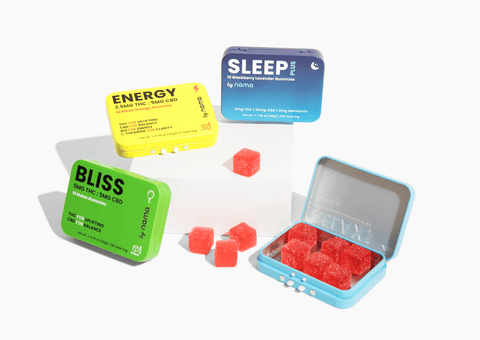
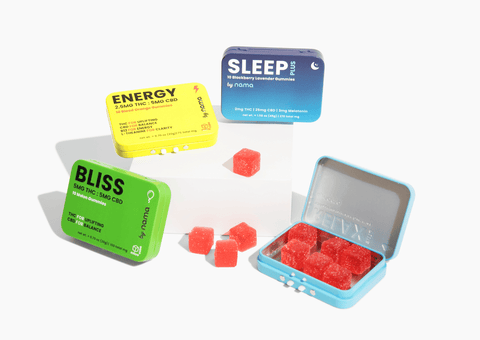
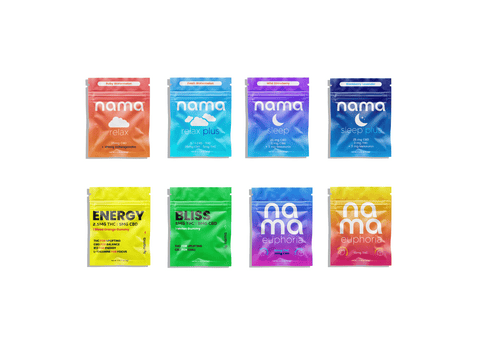

![Buzz Drops™ [THC Drink Drops]](http://www.namacbd.com/cdn/shop/files/nama_thc_buzz_drops.png?v=1711412866&width=480)
![Buzz Drops™ [THC Drink Drops]](http://www.namacbd.com/cdn/shop/files/buzz-drop-wine-comparison.png?v=1736882023&width=480)
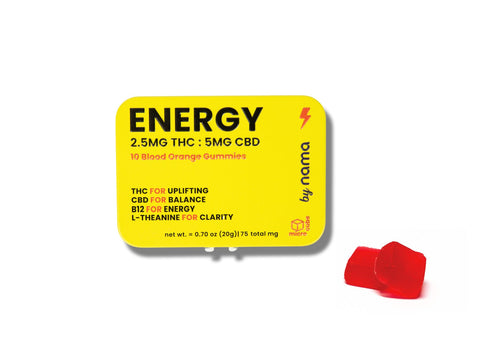
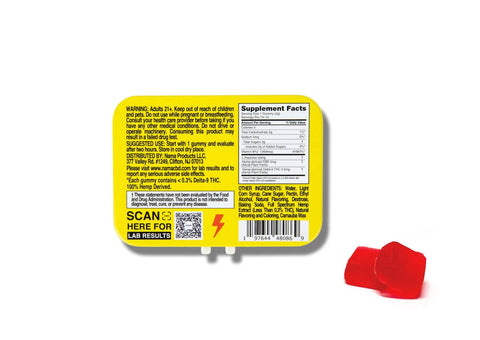
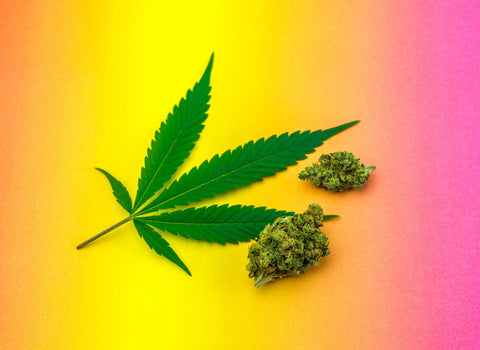
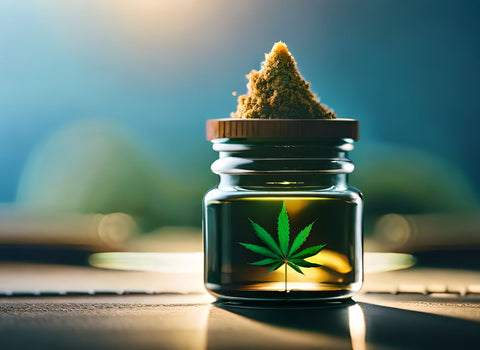



Comments (0)
There are no comments for this article. Be the first one to leave a message!